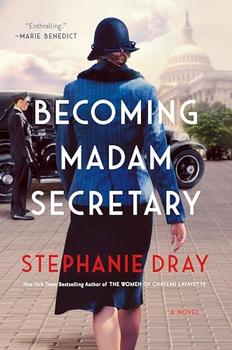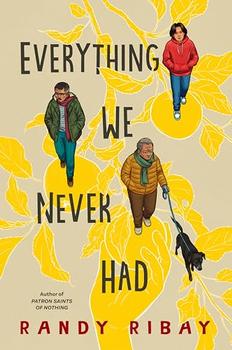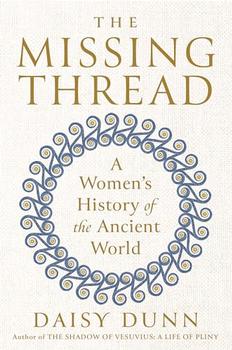Book Club Discussion Questions
In a book club? Subscribe to our Book Club Newsletter!
Please be aware that this discussion guide will contain spoilers!
- In an interview, Amitav Ghosh said of his work, The Glass Palace, "one can examine the truths of individuals in history definitely more
completely in fiction than one can in history." Discuss this statement as it
pertains to the novel. Which truths do his characters reveal?
- Look closely at the characters whom Ghosh envisions in the most
detail, Rajkumar, Dolly, Uma, Arjun, to name a few. They become extraordinary in
our minds of the reader, as we travel with them through a century of social
upheaval and political turmoil. But according to the social structure, they are
all, or once were, relatively ordinary individuals. What is the effect of
focusing a novel of such grand, epic sweep, on members of common society? How
does this very subtle choice affect the story's shape? What does it tell us
about history, and how we have always been taught to remember it?
- Memory could almost be considered a character unto itself in
Ghosh's novel. For instance, Rajkumar's life is utterly driven and shaped by
his one, striking, boyhood memory of Dolly in the plundered Glass Palace during
the invasion of Burma. How does memory play into the lives of Ghosh's other
characters? Can you think of examples where memory compelled a character to
action, or impeded him from recognizing a particular truth? To what extent does
Ghosh suggest the existence of collective memory?
- Ghosh raises several debates over the course of the novel, one
central to the political subtext being that of Imperialism vs. Fascism. Why does
society not look upon Imperial soldiers with the same scorn it holds for those
soldiers committing atrocities under fascist regimes? Should these Imperial
mercenaries be considered willing and conscious henchmen, or were they merely
following orders? What stance does Ghosh take on this issue, if any? What other
debates were you able to extract from the book? What techniques does Ghosh use
to bring these issues and their various arguments to light?
- Ghosh constructs several unique, remarkable, and strong female
characters: Dolly, Uma, Queen Supayalat, even the First Princess, who becomes
pregnant out of wedlock. Each of these women tells us something different and
important about the time and place in which she was living. What strengths do
these women express, and at what points are they identified and illuminated in
the novel? In examining the range and evolution of Ghosh's female characters,
what could we conclude about the relationship between feminine domesticity and
empire? Where and how do the two intersect? What role do women play under
colonialism, and how do Ghosh's characters either reflect or reject it?
- Uma is a particularly interesting character, as she illuminates one
of the ideas central to Ghosh's novel. When we first encounter her, she is
constantly worried about being the proper memsahib, following traditional
domestic etiquette, and living up to the standards of her husband, the
Collector. She soon realized, however, that her husband's dream was not in
accordance with the rules of Indian custom, he longed "to live with a woman as
an equal in spirit and intellect," and she could never, according to custom,
fulfill those expectations. We see a monumental change in her disposition when
she returns to India from New York. How has she transformed, and by what force?
What does Uma's character tell us about the nature of history and the power of
social forces as factors in everyday life?
- Over the course of the novel, the division between conquerors and
conquered becomes increasingly hard to distinguish. The inevitable ethical
dilemma faced by Indian soldiers in the British army comes to the foreground of
the novel, as one member of the INA challenges Indian soldiers in the British
army, "Do you really wish to sacrifice your lives for an Empire that has kept
your country in slavery for two hundred years?" Can you think of any other
episodes in which Ghosh highlights this argument? How does this debate affect
the course and scope of the story?
- In several episodes, Ghosh asks the question, both of his readers and
of his characters; can submission to an oppressor, in certain instances, be a
sign of strength, rather than weakness? For example, at the very outset of the
novel, Rajkumar is heartbroken when he sees Dolly marching out of Burma in the
royal procession, offering the sweets he gave her as a token of his affection to
one of the British guards. Was this a sign of strength on Dolly's part? How
does this foreshadow other events in the novel? What do such episodes tell us
about the effect of colonialism, both on the individual and the collective?
- In The Glass Palace Ghosh examines the individual,
psychological dilemmas posed by colonialism. At one point, an Indian officer in
the British army during World War II exclaims, "What are we? We've learned
to dance the tango and we know how to eat roast beef with a knife and fork. The
truth is that except for the color of our skin, most people in India wouldn't
even recognize us as Indians." This quest for and recognition of personal
identity, both lost and found, figures prominently in the novel. Where do we see
this pursuit played out? How does Ghosh reconcile the notions of personal
identity and national identity? Is one derivative of the other?
- Exile and return are themes that lie at the core of The Glass
Palace. We see King Thebaw and Queen Supayalat living out their exiles in
Ratnagiri, we also experience Dolly's flight from and return to Burma. Even
Rajkumar appears in a constant state of escape and return, from his early
abandonment at age 11. What other stories of exile and return play out over the
course of the book? How do these individual cycles contribute to the overall
structure of the novel?
- At various points in the book, Ghosh invokes the art of photography.
We are encounter photographers throughout the novel, and find ourselves in a
photography shop at the story's close. Where else does photography enter the
story, and how does it serve as a thematic thread? How does Ghosh weave the
theme of photography into the overarching ideas about history and memory that
permeate his novel? How does the photographer's art relate to Ghosh's
conception of the human heart and mind?
- The style of The Glass Palace is elliptical, and at times,
uneven. Ghosh dedicates an entire paragraph to describing the camera with which
Mrs. Khambatta photographed Dolly and Rajkumar's wedding, yet the actual
ceremony takes place, elliptically, when Ghosh writes, "At the end of the
civil ceremony, in the Collector's ‘camp office', Dolly and Rajkumar
garlanded each other, smiling like children." Other such major life events
occur in only sentences, the births of children, the deaths of loved ones, wars,
and other national catastrophes. Do you think this was an intentional literary
choice on Ghosh's part? What effect does it have on the book as a whole, on
your perception of the characters and their stories?
- As much defeat as there is present in The Glass Palace, there
are also extraordinary tales of survival and hope. Can you think of some
examples by which devastating defeat is countered by enormous hope? What claims
does Ghosh make about the human spirit in this novel?
Unless otherwise stated, this discussion guide is reprinted with the permission of Random House.
Any page references refer to a USA edition of the book, usually the trade paperback version, and may vary in other editions.




